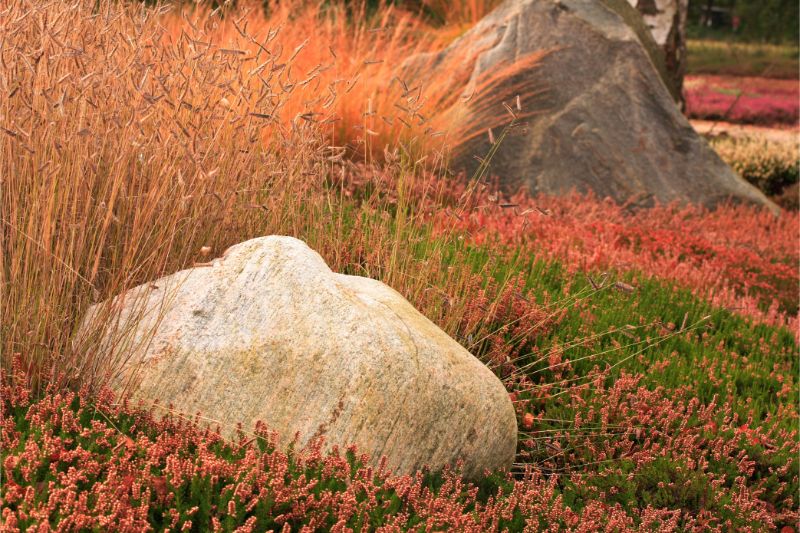Blue Grama
(Bouteloua gracilis)

Blue Grama is a short growing, long-lived, warm-season, native perennial that grows throughout the Great Plains. The leaves are 3 to 6 inches long and less than 1/4 inch wide. The flowering stems are 12 to 24 inches tall. Each stem usually has two purplish spikes that extend at a sharp angle from the main stem.
Blue grama is found on most soil types, including alkaline soils, but is most abundant on the heavier, upland soils. Its capacity to resist drought permits it to occupy the drier areas throughout its range of adaptation.
Growth begins fairly late in the season and depends on how much moisture is available. The forage is relished by all classes of livestock. Growth ceases during long droughts but begins again upon the return of favorable moisture and temperature. Because of its wide distribution, high quality, hardiness, and growth habits, it is one of our most important range species. Under heavy grazing, blue grama often persists in nearly pure stands after the associated grasses disappear. Blue grama is readily established from seed.


General Characteristics
| Growth Type: | Bunch |
| Life Span: | Perennial |
| Growing Season: | Warm Season |
| Native/Introduced: | Native |
| Plant Height: | 12-24 inches |
| Cold Tolerance: | Good |
| Drought Tolerance: | Good |
| Salt Tolerance: | Fair |
| Soil Type: | Sandy Loam - Clay |
| Minimum Rainfall: | 12 inches |
| Planting Rate: | 1-3 pls |
| Planting Date: | Dec. - June |
| Seed Type: | Chaffy |
| Uses: | Grazing, Wildlife Habitat, Erosion Control, Reclamation |
